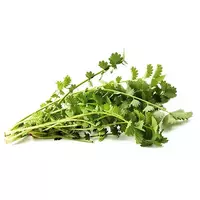Femur stonecutter

The femur stonecutter or stonecutter is a perennial plant that belongs to the Umbrella family. The femur grows in the temperate climate of Europe, as well as in the Russian Federation. As a rule, the plant chooses meadow areas, as well as forest edges. The femur of the rockmill takes root perfectly next door to shrubs, as well as pine and deciduous forests. It is not uncommon for a femur to be found growing near a country road.
The femur of the rockmill is distinguished by its stem, which is quite high for herbaceous plants, which often reaches a size of 80 cm. The femur of the rockmill blooms with inflorescences in the form of umbrellas made of white small flowers. As a rule, there are 6 to 21 rays in one umbrella of the inflorescence. The seeds of the rockmill are ovoid in shape and do not exceed
2. 5 mm in size. Recently, the femur of a stone has been undeservedly deprived of attention. The plant is considered weedy because not everyone knows how to use the femur stone.
In cooking, they use young leaves, as well as the root system of the plant. As a rule, fresh rock leaves are added to vegetable salads, soups, as well as vinaigrettes. From the roots and leaves of stone-carp, seasoning is made, which is used in the process of making meat and sausage products. Seeds, leaves, as well as flowers of the plant, the femur is used as a fragrance in the preparation of alcoholic and non-alcoholic drinks.
Due to the distinctive properties of the plant, the femur of a stone-catcher acts in the food industry as a natural natural dye, which gives drinks a pleasant warm gold color. It is noteworthy that in addition to color, the femur gives drinks a pleasant aroma. The taste of fresh leaves of the plant resembles cucumbers. However, over time, the femur opens up its spicy fresh taste. The femur is perfect for cooking fish dishes, pilaf, soups, as well as salads, spicy sauces and kohlrabi cabbage.
As a condiment, the femur of a stony is considered a full replacement for cumin or anise. Connoisseurs argue that to enhance the taste and spicy aroma of the plant, you need to add only a few drops of lemon juice to the hip seasoning. The femur of a stonecutter is included in the so-called savoury vinegar. In addition to cooking, the plant has long been used as an effective means of traditional medicine.
In the herbalists of the 16th century, the femur of the stony is mentioned as a medicine that helps in the treatment of cholera or plague. The femur of a stone-catcher helps in the treatment of gout, asthma, has diuretic properties. In addition, infusions and decoctions prepared on the basis of the plant in the form of rinses help in the treatment of sore throat, scarlet fever and laryngitis.
femur stonecutter 0.1 kCal
The energy value of the femur is stone (Ratio of proteins, fats, carbohydrates - ju):
Proteins: 0 g (~ 0 kCal)
Fats: 0 g (~ 0 kCal)
Carbohydrates: 0 g (~ 0 kCal)
Energy ratio (b | y): 0% | 0% | 0%
 Español
Español Français
Français Português
Português Русский
Русский 简体中文
简体中文 繁體中文
繁體中文 日本語
日本語 한국어
한국어 العربية
العربية Türkçe
Türkçe Қазақ
Қазақ Deutsch
Deutsch Italiano
Italiano Українська
Українська
